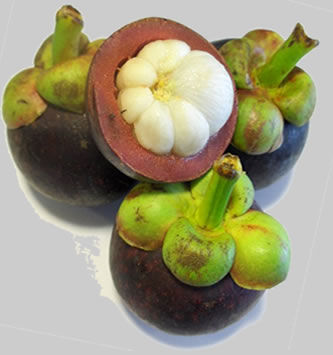
Fruit de Rois, Jus de Xango, Manggistan, Mangostao, Meseter, Xango, Mangkhut, Purple Mangosteen, Queen of Fruit, Semetah
Mangosteen is a juicy but slightly sweet and sour tasting fruit that is native to Sunda Islands and the Moluccas of Indonesia. Mangosteen grows in tropical climates and widely cultivated in Southeast Asian countries such as Java, Philippines, Sumatra, Thailand and Burma.
The mangosteen tree is very slow-growing, erect, with a pyramidal crown; that can reach 6-25 meters in height. The bark has a flaking texture of dark-brown to black colour. Mangosteen has evergreen leaves that are elliptic, leathery and thick, slightly glossy above, yellowish-green and dull beneath. The mangosteen has flowers that are about 4-5 cm. wide and fleshy. The former are in clusters of 3-9 at the branch tips; green with red spots on the outside, yellowish-red inside, there are stamens with aborted anthers and no pollen.
Mangosteen fruit is capped by the prominent calyx at the stem end, is round, dark-purple to red-purple and smooth externally. The rind is 6-10 mm. thick, red in cross-section, purplish-white on the inside. It contains bitter yellow latex with purple, staining juice. There are 4 to 8 triangular segments of snow-white, juicy, soft flesh. The fruit may be seedless or have 1 to 5 fully developed seeds, ovoid-oblong, somewhat flattened. The taste is slightly acid and mild to distinctly acid in flavor and is acclaimed as exquisitely luscious and delicious.
Mangosteen is not only an exotic fruit but has value in traditional herbal medicine as practiced in most Asian countries. Its popularity caused it to travel half the globe to be sampled by Queen Victoria hence it is called the Queen of fruit. There are a couple of health benefits that mangosteen is known for and it is not only the fruit that is used but other plant parts are also used. Listed below are some of the traditionial health benefits of mangosteen.
Antidiarrheal. Mangosteen fruit has long been used to effectively treat diarrhea and improve the bowel movement. The fruit is eaten once a day until the condition improves.
Antioxidant. Mangosteen is believed to be rich in antioxidants. It is used to repair and prevent damage to cells by free radicals.
Anticancer. The antioxidant property of mangosteen is believed to be beneficial in the prevention of cancer. It is also given as a supplemental diet to cancer patients.
Allergy. Mangosteen has been used to avert and alleviate allergic reactions.
Anemia. The purplish colour of Mangosteen fruit is believed to aid the production of red blood cells and thus is used to treat anaemia.
Blood Pressure. Mangosteen also contains beneficial minerals such as potassium, manganese, magnesium and others that are important in regulating the proper function of the heart. It is also believed to help dilate the blood vessels thus improving circulation and reducing blood pressure.
Cataracts. The vitamin C rich mangosteen and its ability to increase the amount of blood flow to the eye, is said to be effective in preventing the development of cataracts and improving vision
Reduces Cholesterol. Mangosteen is rich in fiber that is beneficial and helpful in reducing the cholesterol level in the blood. It also improves blood circulation that prevents the cholesterol build up called plaque that averts atherosclerosis.
Dementia. Consumption of mangosteen fruit is believed to improve the symptoms of dementia that include confusion, anxiety, and forgetfulness.
Energy booster. The vitamins and minerals found in mangosteen provide the needed nutrients to keep the body energized. The anti oxidant properties also refreshes the body’s cells and thus organs function are improved..
Inflammation. Mangosteen is belived to possess anti inflammatory activity that is beneficial in treating body pains associated to inflammation such as sciatica, osteoarthirits, rheumatism, and other muscle and joint pains.
Fever. The decoction from mangosteen leaves and roots are used to control the body temperature in cases of high fever.
Gum disease. The gel from mangosteen is said to alleviate gum problems such as periodontitis and aphthous ulcer.
Heart diseases. The antioxidant properties of mangosteen is believed to protect the heart from developing problems by protecting the cells from damage due to free radical activity. It also improves blood flow by dilating blood vessels and lowers cholesterol.
Mentrual disorders. Mangosteen root concoction is used to regulate menstruation. It is used to reduce premenstrual symptoms that include mood swings, dizziness, and uneasiness.
Tubercolosis. Mangosteen fruit contains vitamins and minerals that is beneficial in maintaining strong immune system. The antibacterial and antifungal properties of mangosteen also helps to arrest the further complications from tubercolosis.
Urinary tract infection. A tea concoction from mangosteen leaves and bark are used to treat urinary tract infections.
Stomach problems. Mangosteen leaves and barks are used for treating different stomach problems such as diarrhea, dysentery, chronic ulcer.
Skin problems. Mangosteen rind is belileved to possess antibacterial and antifungal activity that is used to control acne and other skin problems such as eczema, ulcers, skin rashes and wounds.
Weight reduction. Mangosteen fruit is rich in vitamins and minerals and contains almost zero fat. It is also rich in fiber that may offer valued health benefits for those who wish to lose weight.
Antiproliferation, antioxidation and induction of apoptosis by Garcinia mangostana (mangosteen) on SKBR3 human breast cancer cell line
This study was designed to determine the antiproliferative, apoptotic and antioxidative properties of crude methanolic extract from the pericarp of Garcinia mangostana (family Guttiferae) using human breast cancer (SKBR3) cell line as a model system. The study found that antiproliferative effect of crude methanolic extract was associated with apoptosis on breast cancer cell line by determinations of morphological changes and oligonucleosomal DNA fragments. In addition, CME at various concentrations and incubation times were also found to inhibit ROS production. These investigations suggested that the methanolic extract from the pericarp of Garcinia mangostana had strong antiproliferation, potent antioxidation and induction of apoptosis. Thus, it indicates that this substance can show different activities and has potential for cancer chemoprevention which were dose dependent as well as exposure time dependent. Source: Journal of Ethnopharmacology, Volume 90, Issue 1, January 2004, Pages 161–166
Garcinia mangostana: a source of potential anti-cancer lead compounds against CEM-SS cell line.
This study investigated the natural anti-cancer lead compounds from the stem and roots of Garcinia mangostana. The hexane and chloroform extracts of the root bark of G. mangostana as well as the hexane extract of the stem bark were found to be active against the CEM-SS cell line. gamma-Mangostin showed good activity with a very low IC(50) value of 4.7 microg/ml, while alpha-mangostin, mangostanol, and garcinone D showed significant activities with IC(50) values of 5.5, 9.6, and 3.2 microg/ml, respectively. This is the first report on the cytotoxicity of the extracts of the stem and root bark of G. mangostana and of alpha-mangostin, mangostanol, and garcinone D against the CEM-SS cell line. Source: Journal of Asian Natural Products Research. 2008 May-Jun;10(5-6):475-9.
Medicinal properties of mangosteen (Garcinia mangostana)
Experimental studies have demonstrated that extracts of Garcinia mangostana Linn have antioxidant, antitumoral, antiallergic, anti-inflammatory, antibacterial, and antiviral activities. The pericarp of Garcinia mangostana Linn is a source of xanthones and other bioactive substances. Prenylated xanthones isolated from Garcinia mangostana Linn have been extensively studied; some members of these compounds possess antioxidant, antitumoral, antiallergic, anti-inflammatory, antibacterial, antifungal and antiviral properties. Xanthones have been isolated from pericarp, whole fruit, heartwood, and leaves. The most studied xanthones are α-, β-, and γ-mangostins, garcinone E, 8-deoxygartanin, and gartanin. The aim of this review is to summarize findings of beneficial properties of GML’s extracts and xanthones isolated from this plant so far. Source: Food and Chemical Toxicology, Volume 46, Issue 10, October 2008.
Xanthones from mangosteen (Garcinia mangostana): multi-targeting pharmacological properties.
This review focuses on mangosteen pericarp extracts, xanthones and derivatives for the future laboratory experiment and development in pharmacological aspects. Results suggest that Xanthones are a group of oxygen-containing heterocyclic compounds including alpha-mangostin, gamma-mangostin, mangosteen extract, xanthone derivatives and synthetic xanthones, which provide remarkable and diverse pharmacological effects such as anticancer, antioxidant, anti-inflammatory and antimicrobial activities. These xanthone compounds may play a major role in therapeutic treatment ofthe diseases but precise mechanisms ofaction are still unclear and needfurther investigation. Source: Journal of the Medical Association of Thailand. 2014 Feb.
Mangosteen would be plentiful during its peak season in summer. Mangosteen are generally sold in local Asian markets and fruit stands. For colder climates such as in America and United Kingdom, it can also be bought through online stores. However, due to a very short shelf life of fresh mangosteen fruit, shipping is usually done overnight and may cost more. Amazon has this listed: Fresh Mangosteen .
Eaten as fruit. Choose deeply-colored mangosteen that are firm but yield slightly to pressure. Select those that still have their caps. Should be kept in the refrigerator, but use them quickly -- within a few days.
Poultice and paste. Grounded Mangosteen leaves, rind and root are prepared as poultice applied externally over the affected area to alleviate pain and symptoms of inflammation. It is usually mixed with other herbal oils such as olive and coconut oil.
Mangosteen herbal tea. Decoction of tea may be prepared from the powdered Mangosteen rind or leaves and roots.
Mangosteen herbal tea or decoction
Mangosteen herbal tea is good to last for one day. Make new Mangosteen herbal tea as needed.
Dried Mangosteen leaves, rind, bark and roots are more potent, use at half dosage.
Mangosteen Juice. Mangosteen fruit (without the seeds) juice can be prepared as fruit shakes, sherbet or can be added with other fruit juices.
Mangosteen fruit are considered safe for consumption as found in food. Herbal medicine preparations should be taken as recommended for most adults. Just lilke any other herbal medicine, the key is moderation of use.
Pregnancy and Breast feeding. There is no sufficient studies about the safety of taking mangosteen in herbal medicine dosage during pregnancy or breast feeding. Stay on the safe side and avoid use.
Bleeding disorders: Mangosteen improves blood flow. Taking mangosteen might increase the risk of bleeding in people with bleeding disorders.
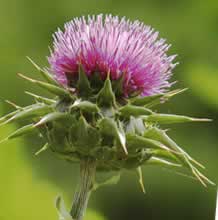 Silymarin extract still tops in liver protection
Silymarin extract still tops in liver protection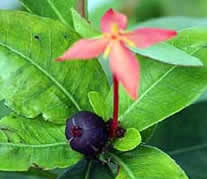 Santan Flower has wound healing properties
Santan Flower has wound healing properties 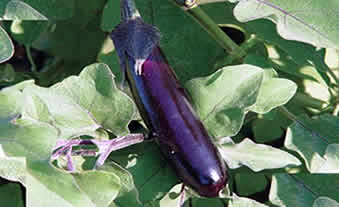 Antioxidant properties from Talong
Antioxidant properties from Talong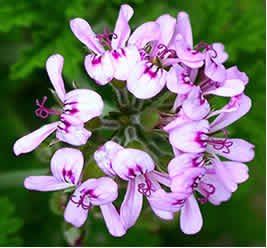 Malvarosa Plant found to have antioxidant properties
Malvarosa Plant found to have antioxidant properties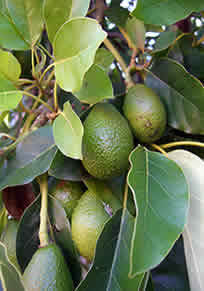 Anti-cancer properties of Avocado fruit
Anti-cancer properties of Avocado fruit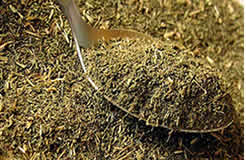 Stevia use can cause cancer, studies suggests
Stevia use can cause cancer, studies suggests